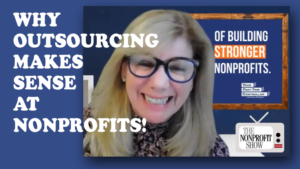Many organizations have seen a significant downturn in their operations due to the pandemic and the money that the federal government has made available to them under the CARES Act has been a significant economic boost to help mitigate these downturns. While the SBA standards for forgiveness of the PPP loans seem fairly straightforward, there can be complications lurking beneath the surface.
- Did you spend the funds provided?
- Were they expended for allowable purposes during the 8-or 24-week covered period?
- Did you retain your staff (or if you didn’t, did you meet one of the numerous safe harbors or exceptions)?
- Did you not decrease staff salaries by more than 25%?
How your CARES Act funding interplays with your normal government reimbursement isn’t as clear-cut. In addition, if your organization was lucky enough (or unlucky enough depending on if you are a glass half-empty person) to obtain funding from multiple CARES Act programs, such as HHS or ERTC, how is the best way to utilize each of these sources of funding to maximize your agency’s benefit?
INTERPLAY WITH GOVERNMENT FUNDING:
There has been a lot of murkiness with respect to how the CARES Act funding will be impacted by your other government funding. From the beginning, we, as well as many other accountants and attorneys, have been cautioning providers that CARES Act funding could eventually have significant negative impacts on their reimbursements. While uncertainty still exists, there is a little clarity emerging:
- Medicare: Within its Q&A, question 5 addresses how the PPP loan forgiveness impacts Medicare funding. Medicare, in its response, states that SBA loan forgiveness does not offset Medicare expenses unless these amounts are attributable to specific claims such as payments for the uninsured. This provides some positive insight from the federal government that it will treat Medicare (a fee-based program) as mutually exclusive to PPP forgiveness.
- Federal Office of Management and Budget (“OMB”): The OMB issued guidance that payroll costs (this would apply to non-payroll costs also) with PPP loans or any other CARES Act programs must also not be charged to current federal awards as it would result in the federal government paying for the same expenditures twice. The federal awards that the OMB is referring to are deficit-funded (cost-based). This makes sense since if a program receives forgiveness for a particular expense, how can that expense be also charged to a deficit-funded contract? This is the “double-dipping” that you may have heard of.
- Consolidated Fiscal Report (“CFR”): The instructions for the 2020 CFR requires CARES Act funding to be included in the Federal Grant line (line 79) of CFR-1. This line is considered offsetting revenue for purposes of funding. By treating it as offsetting revenue, it impacts cost-based programs (as expenditures would be reduced) but it has no impact on fee-based programs (as costs incurred don’t matter). This is consistent with the federal guidelines outlined above.
- New York State Medicaid: The New York State Department of Health (“DOH”) is yet to issue any guidance with respect to how CARES Act funding will impact Medicaid funding (which is fee-based). We believe that the State is awaiting the budget passing to provide definitive guidance. As this is a fee-based program, we are hoping that the State will take its direction from Medicare on this.
UTILIZATION OF CARES ACT FUNDING:
While there have been many sources of COVID support for nonprofits, such as private grants, FEMA, EIDL, and ESSR funding (schools), the most common three programs are:
- PPP Loans: There have been two separate draws of PPP funding, each with its own eligibility requirements. The PPP program covers personnel costs (compensation, health benefits, life insurance, qualified pension, and state and local taxes), rent (property and equipment), utilities (including telephone and Internet), mortgage interest, certain software and cloud-based solutions (payroll processing, sales and billing, accounting, inventory tracking, medical records, CRM, etc.), covered property damage attributable to the 2020 public disturbances, covered supplier costs (pre-COVID contracts), and covered worker protections (PPE, ventilation, increased outdoor space, etc.)
- HHS Funding (Provider Relief Funds): These were provided to providers of medical services funded by Medicare and Medicaid. These funds covered both COVID-related expenses (broadly defined) and decreases in revenue attributable to COVID, either in calendar year 2020 versus 2019 or calendar year 2020 compared to budget (which must have been approved and ratified prior to March 26, 2020).
- Employee Retention Tax Credit (ERTC): Similar to PPP, there were two distinct funding rounds with two separate criteria – the 2020 round and the 2021 round. Original regulations prohibited ERTC funding if an organization received PPP funding, but in December 2020, this was changed to allow both at the same time. This has opened the door for organizations to consider retroactive application for ERTC funding. Keep in mind that the 2020 funding is much more restrictive and much smaller than 2021, but it is still something that should be considered (especially for providers with fewer than 100 employees). ERTC funding only covers salary and health benefits.
By understanding what each program funds and how you are funded within your organization (cost- or fee-based), you can start to lay out your analysis of which costs can be covered by the various CARES Act programs in place.
- Cost-based reimbursement: The only real options within cost-based/deficit-funded programs is to use CARES Act funding to cover losses. Any amounts charged to cost-based programs in excess of losses will reduce your contractual reimbursement (and in some instances, may impact ongoing funding).
- Fee-based programs: Since there is no real offset on fee-based programs (remember DOH has not yet provided guidance surrounding Medicaid funding), you should seek forgiveness for any eligible costs within the fee-based programs. This is the same for non-government-funded programs and fundraising.
- Revenue declines: If you had declines in patient service revenue, these can be covered by any HHS funding you received (after HHS funding was used to cover COVID-related expenditures)
- Administrative costs: Administrative costs should be allocated to each of your programs using an appropriate allocation methodology (cost based, ratio value, etc.). Administrative costs will be offsetable based upon how the program they are allocated to are funded.
STRATEGIES:
Finally, by understanding which funds are available and which costs you have incurred (or will be incurring), you can start to develop strategies on how to maximize reimbursement:
- Maximize non-salary costs on PPP: Since PPP, ERTC, and HHS can all be applied against salaries, you want to maximize the non-personnel costs charged to PPP loans. You can charge up to 40% of non-personnel costs to the PPP loan when seeking forgiveness.
- Stagger funding: Consider applying (providing you qualify) for the ERTC before and after your PPP loan is in effect. This will allow you to maximize reimbursement under both programs. If you are applying for ERTC, also consider only applying for funding under fee-based programs (unless you have losses within cost-based programs that won’t be funded under other programs).
- Understand what you qualify for: If you will only qualify for the ERTC for the first quarter of 2021 and won’t qualify for the balance of the year, apply for the ERTC for the first quarter and then use the PPP funds after the first quarter is over to maximize benefit (keep in mind cost- versus fee-based programs for the ERTC, as previously discussed).
- Communicate with funders: Open up lines of communication with deficit-funded grantors to see if you can extend your grant term to take advantage of CARES Act funding.
The CARES Act funding provides a tremendous benefit to programs, but the rules and regulations can be very complex. Take the time to develop appropriate tools through Excel and documentation to support your cost allocations and expense charges to ensure you properly consider and maximize your benefits. There are significant opportunities for both funding and for mistakes, but if you consider how you are funded, what funding is available, and when that funding is in place, you have the greatest chance of helping your organization through these troubled times.
NONPROFIT CARES ACT UPDATE WEBINAR
**AS OF APRIL 6, 2021**
Ken Cerini of Cerini & Associates, LLP discussed:
- How forgiveness interplays with your funding streams
- With so many resources (HHS, PPP, ERTC, etc.) how they interplay with each other and how they can be effectively deployed
- While PPP does not open providers up for a Uniform guidance audit, ERTC, HHS, and other CARES Act related funding could … are you appropriately prepared for these audits and do you understand your responsibilities?
- If you received over $2 million in PPP funding, you could be subject to audit
Thank you to Human Services Council!
Download the Mixed Excel Sheet

KENNETH R. CERINI, CPA, CFP, FABFA | Managing Partner
Ken is the Managing Partner of Cerini & Associates, LLP and is the executive responsible for the administration of our not-for-profit and educational provider practice groups. In addition to his extensive audit experience, Ken has been directly involved in providing consulting services for nonprofits and educational facilities of all sizes throughout New York State in such areas as cost reporting, financial analysis, Medicaid compliance, government audit representation, rate maximization, board training, budgeting and forecasting, and more.





No comment yet, add your voice below!